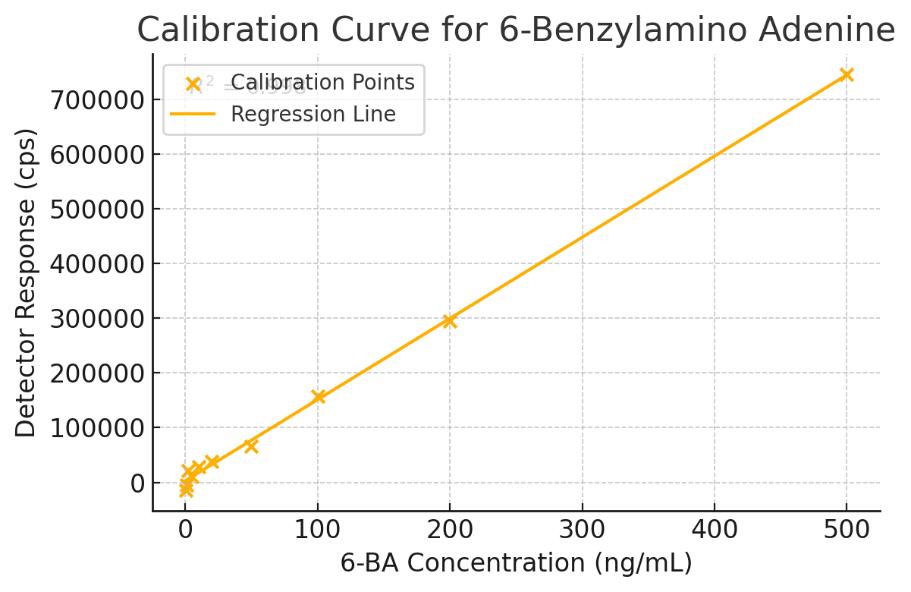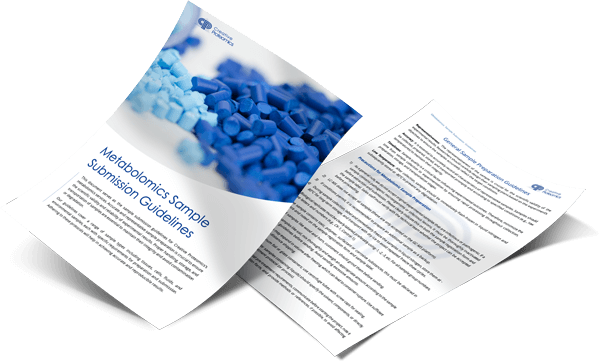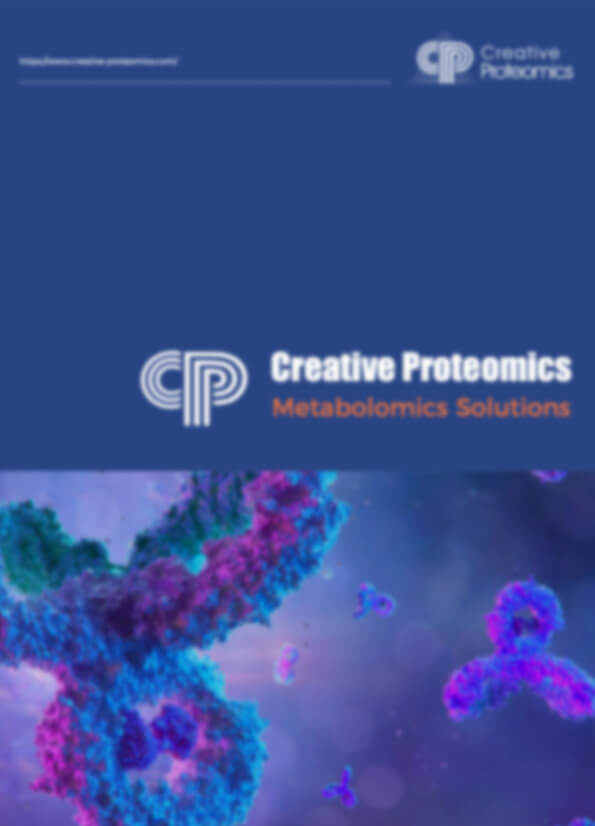6-Benzylaminopurine Analysis Service
Creative Proteomics specializes in high-sensitivity analysis of 6-Benzylaminopurine and related cytokinins. We help you quantify growth regulators, monitor residual levels, and unravel cytokinin metabolism in diverse plant and agricultural samples.
Whether you're focused on plant tissue culture, agricultural product quality control, or hormone research — we deliver the precise analytical insights you need.
What Sets Our Service Apart?
- Comprehensive Quantification
Accurate measurement of 6-BA and metabolites, with simultaneous profiling of related cytokinins - Ultra-Low Detection Limits
Sensitivity down to 0.2 ng/mL to capture trace-level compounds in complex matrices - Wide Sample Compatibility
Validated for plant tissues, culture media, fertilizers, biostimulants, and soil extracts - Robust Methodology & Data Quality
RSD<5%, strong="" linearity="">0.995), and rigorous method validation for reliable results
Submit Your Request Now
×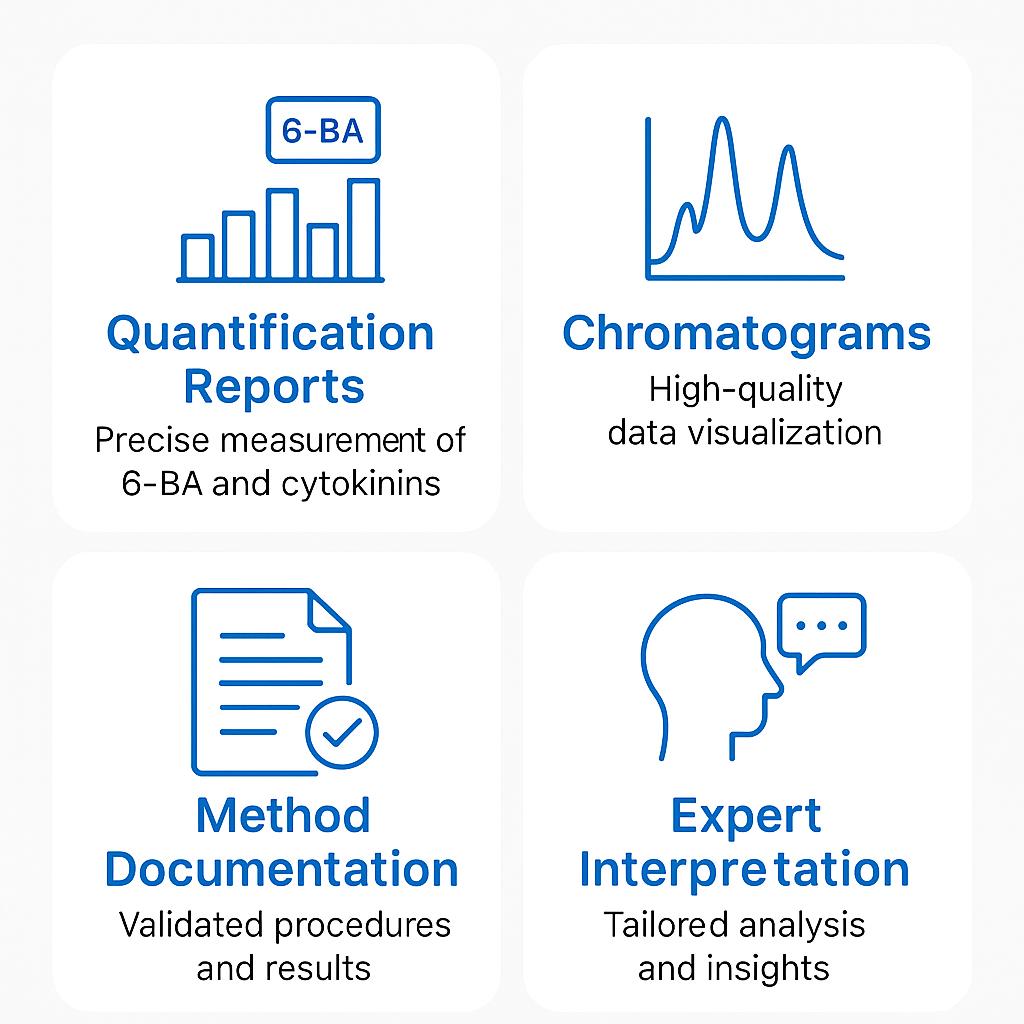
Deliverables You Can Expect:
- Precise quantification reports of 6-BA and related cytokinins
- High-quality chromatograms and spectra for data transparency
- Validated method details and performance metrics
- Expert interpretation tailored to your research or QC needs
- Flexible data formats for easy integration and submission
- What We Provide
- Advantages
- Technology Platform
- Sample Requirement
- Demo
- Case
- FAQ
What is 6-Benzylaminopurine?
6-Benzylaminopurine (6-BA) is a synthetic cytokinin, a class of plant growth regulators that promote cell division and shoot proliferation. Structurally, it is a benzylated derivative of adenine, with a benzylamino group substituted at the 6-position of the purine ring.
6-BA plays a crucial role in plant tissue culture, where it stimulates shoot initiation and delays leaf senescence. It is widely used in agricultural biotechnology, horticulture, and plant physiology research to investigate hormone signaling pathways, regulate morphogenesis, and improve crop propagation efficiency.
Why Analyze 6-Benzylaminopurine?

Optimize Plant Growth Protocols
- Determine optimal concentrations of 6-BA for tissue culture media.
- Evaluate the impact of 6-BA on shoot proliferation, cell division, and morphogenesis.
- Support R&D for novel plant growth regulators.

Quality Control in Agricultural Products
- Detect and quantify residual 6-BA in fertilizers, biostimulants, and agricultural formulations.
- Ensure regulatory compliance for commercial products.
- Protect brand reputation with verifiable analytical data.

Research into Cytokinin Metabolism
- Study metabolic pathways of exogenous cytokinins.
- Investigate degradation, conjugation, and transport of 6-BA in plant systems.
- Correlate 6-BA levels with physiological responses under stress or developmental cues.
6-Benzylaminopurine Analysis Service Offered by Creative Proteomics
- Quantitative Analysis of 6-Benzylaminopurine: Accurate measurement of 6-BA concentrations in plant tissues, culture media, and agricultural products.
- Detection of Residual 6-BA in Commercial Products: Analysis of fertilizers, biostimulants, and formulations to verify compliance and product quality.
- Method Development and Validation: Custom analytical methods optimized for specific sample types and regulatory requirements.
- Profiling of Cytokinin-Related Compounds: Simultaneous measurement of 6-BA alongside other key cytokinins for comprehensive plant hormone studies.
- Sample Preparation and Cleanup: Specialized extraction and purification techniques to handle complex matrices and improve data reliability.
- Custom Reporting and Expert Data Interpretation: Clear, detailed reports with professional insights to integrate results into research or production workflows.
List of Detectable 6-Benzylaminopurine and Related Metabolites
| Compound Name | Description / Significance |
|---|---|
| 6-Benzylaminopurine (6-BA) | Synthetic cytokinin widely used in plant tissue culture and growth regulation. |
| 6-Benzylaminopurine Riboside (6-BAPR) | Riboside conjugate of 6-BA, involved in cytokinin transport and storage. |
| 6-Benzylaminopurine-9-glucoside (6-BA9G) | Glucoside conjugate indicating cytokinin inactivation or storage forms. |
| 6-Benzylaminopurine-7-glucoside (6-BA7G) | Alternate glucoside conjugate form of 6-BA. |
| 6-Benzylaminopurine N-glucosides | Diverse conjugated forms significant in metabolic profiling. |
| Hydroxylated derivatives of 6-BA | Potential metabolites formed via oxidative pathways in plant tissues. |
| Zeatin (trans- and cis- forms) | Naturally occurring cytokinins related structurally and functionally to 6-BA. |
| Kinetin | Another synthetic cytokinin structurally related to 6-BA. |
| Isopentenyl adenine (iP) and derivatives | Naturally occurring cytokinins relevant for comparative studies. |
| Dihydrozeatin | Cytokinin derivative included in broader cytokinin analysis panels. |
| Adenine | Possible degradation product from cytokinin catabolism. |
| Benzyl derivatives | Byproducts potentially released during 6-BA catabolism. |
Advantages of 6-Benzylaminopurine Assay
- High Sensitivity: Detection limits (LOD) as low as 0.2 ng/mL, enabling quantification in trace-level samples such as plant tissues, culture media, or formulated products.
- Wide Linear Range: Calibration curves with excellent linearity (R² > 0.995) across 0.5–500 ng/mL, ensuring accurate quantification in diverse sample types.
- Precision and Accuracy: Intra- and inter-day relative standard deviations (RSDs) typically<5%, and recovery rates between 85–110%, validated using stable isotope-labeled internal standards.
- Specificity: Multiple Reaction Monitoring (MRM) mode used to distinguish 6-BA from structurally similar cytokinins, minimizing false positives and ensuring confident identification.
- Minimal Sample Volume Required: Requires as little as 200 µL of liquid sample or 0.1 g of solid material, preserving precious or limited specimens.
Methods and Instrumentation for 6-Benzylaminopurine Analysis
Instrumentation and Platforms
AB Sciex QTRAP® 6500+ LC-MS/MS System
- Ultra-high sensitivity for trace-level detection
- Multiple Reaction Monitoring (MRM) for precise quantification
- Superior selectivity to distinguish 6-BA from structurally similar cytokinins
Thermo Scientific™ Vanquish™ UHPLC System
- High-pressure capability for excellent chromatographic resolution
- Fast run times to improve sample throughput
- Excellent reproducibility for complex plant matrices
Agilent 1260 Infinity II LC System
- Versatile HPLC platform for routine analyses
- Robust performance for agricultural formulation testing
- Compatible with various detection modes for flexibility
Analytical Method Highlights
Detection Limit (LOD): as low as low ng/mL levels.
Quantification Range: broad linear range covering trace to high concentrations.
Selectivity: simultaneous differentiation of 6-BA from structurally related cytokinins.
Matrix Compatibility: validated for plant tissues, culture media, fertilizers, and complex agricultural products.
Method Validation: rigorous precision, accuracy, and reproducibility assessments.
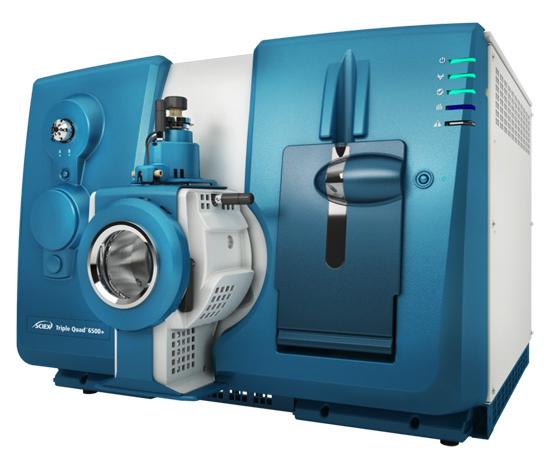
SCIEX Triple Quad™ 6500+ (Figure from Sciex)
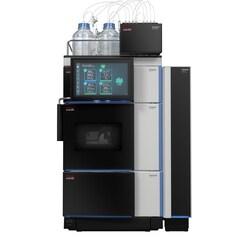
Vanquish™ UHPLC System (Figure from Thermo Scientific)
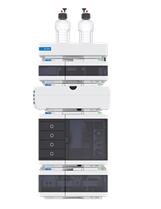
Agilent 1260 Infinity II HPLC (Fig from Agilent)
Our 6-Benzylaminopurine Assay Workflow
1. Project Consultation
Clarify project objectives and regulatory needs, recommend appropriate sample types, concentration ranges, detection limits, and reporting formats.
2. Sample Receipt and Logging
Check sample condition and documentation upon arrival, and assign unique identifiers for traceability.
3. Sample Preparation
Prepare samples through homogenization or dilution, extract analytes using optimized solvent systems, apply SPE cleanup, and add internal standards for accurate quantification.
4. Instrumental Analysis
Conduct analysis using UHPLC/HPLC coupled with LC-MS/MS (QTRAP® 6500+), ensuring high sensitivity, selectivity for 6-BA, and clear separation from related compounds.
5. Data Processing and Quality Control
Generate calibration curves, validate data quality (accuracy, precision, S/N ratio), and confirm results through replicate injections as needed.
6. Reporting and Interpretation
Deliver comprehensive reports with quantified results, chromatograms, spectra, and optional method validation, along with expert interpretation for research or quality control purposes.
7. Optional Follow-Up Services
Provide further statistical analysis, group comparisons, or data formatting for regulatory submissions or publications.
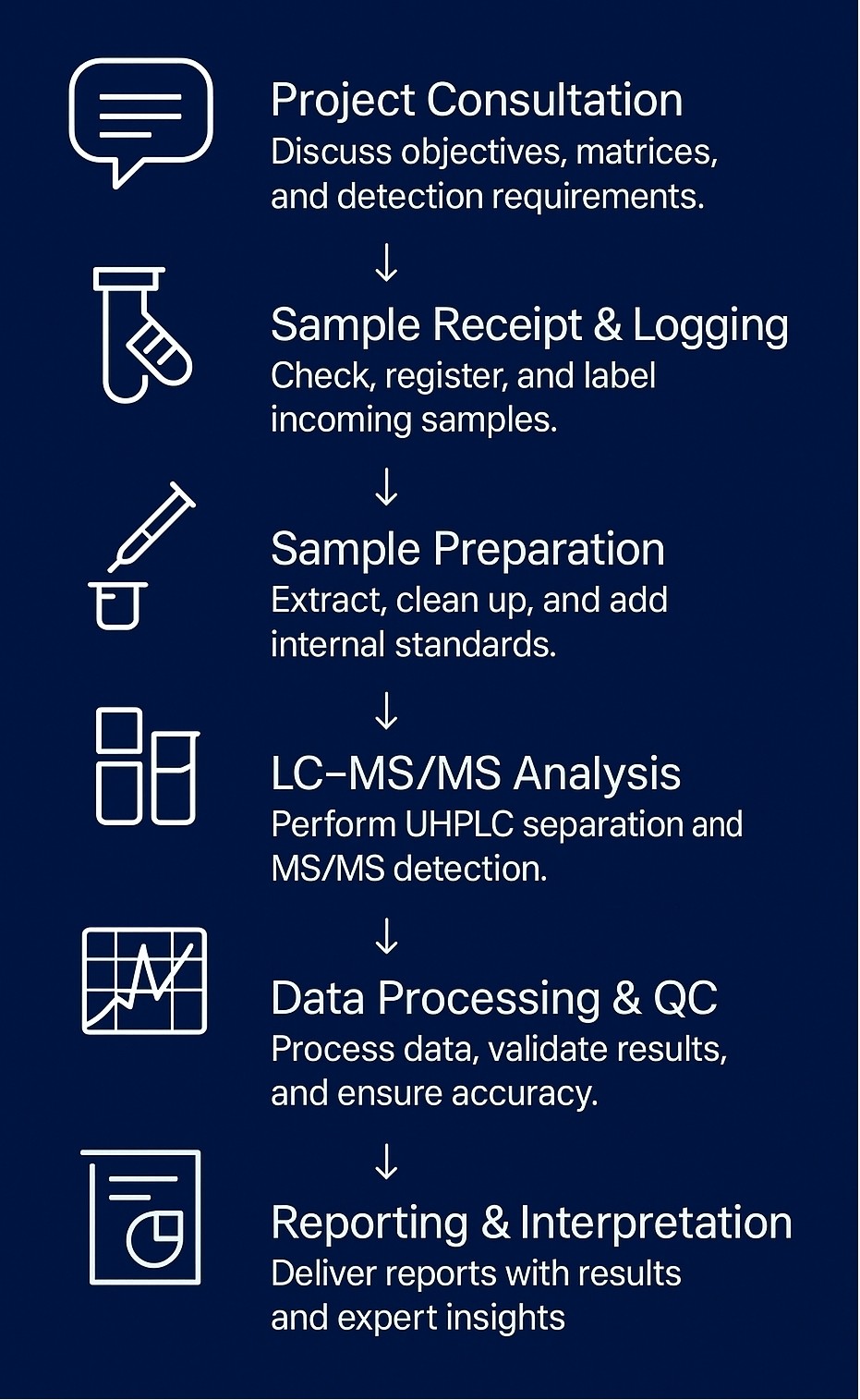
Sample Requirements for 6-Benzylaminopurine Analysis Service
| Sample Type | Minimum Amount / Volume | Recommended Container | Storage & Shipping Conditions | Key Preparation Notes |
|---|---|---|---|---|
| Fresh or Frozen Plant Tissue (leaf, stem, root) | ≥ 100 mg (wet weight) | 2 mL cryovial or foil-wrapped tube | Snap-freeze in liquid N₂, store at −80 °C; ship on dry ice | Remove surface moisture; avoid repeated freeze–thaw cycles |
| Callus / In-Vitro Tissue | ≥ 50 mg | Sterile cryovial | −80 °C; dry-ice shipment | Rinse with sterile PBS to remove media residues |
| Culture / Hydroponic Medium | ≥ 1 mL | 2 mL screw-cap tube (polypropylene) | Freeze at −20 °C; ship on frozen gel packs or dry ice | Filter (0.22 µm) to remove debris if turbid |
| Agricultural Liquid Formulation (fertilizer, biostimulant) | ≥ 5 mL | Amber glass vial with PTFE-lined cap | 4 °C; cold-pack shipment; protect from light | Record pH and any solvent content |
| Powder / Granular Product | ≥ 2 g | Sealed polyethylene bag inside rigid vial | Ambient; cold-pack if transit > 48 h | Provide formulation details and carrier matrix |
| Soil or Substrate Extract | ≥ 10 mL filtrate | HDPE bottle | 4 °C; cold-pack shipment | Extract with aqueous methanol (70%) before shipment if possible |
Demo Results
6-Benzylaminopurine Analysis Service Case Study
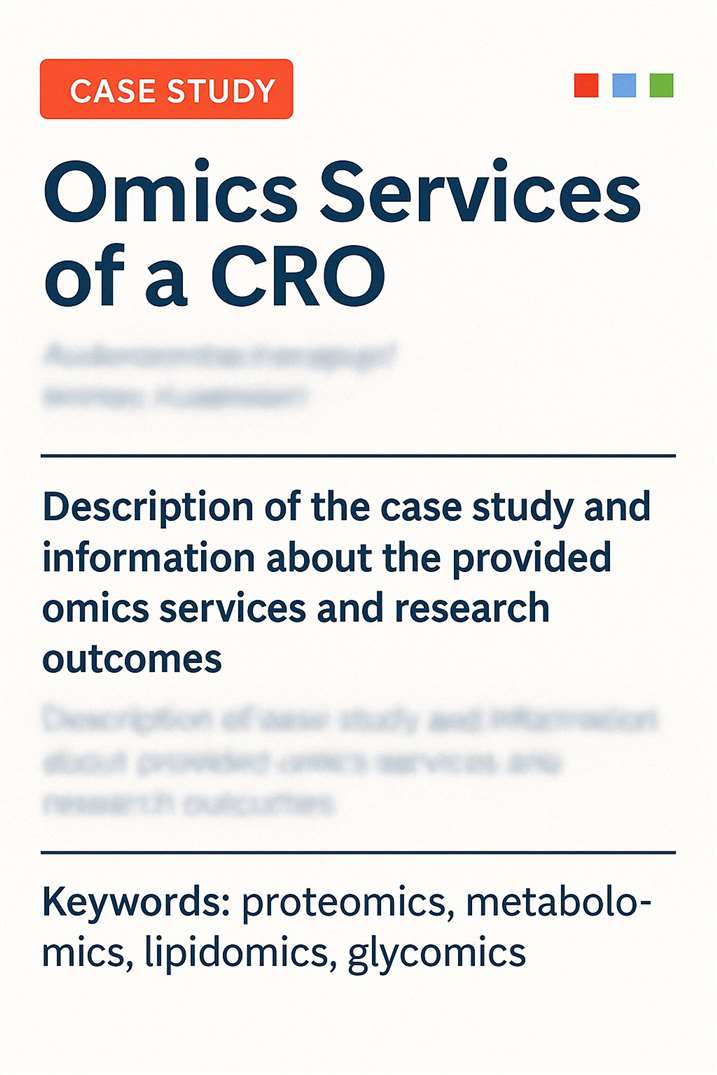
Title: Seaweed Extracts Enhance Somatic Embryogenesis and Plant Regeneration in Lycopersicon esculentum cv Co-3 via In Vitro Culture
Journal: Journal of Applied Phycology
Published: 2015
- Study Summary
- Background
- Methods
- Results
- Reference
This study establishes an efficient somatic embryogenesis protocol for tomato (Lycopersicon esculentum cv Co-3) using a combination of plant growth regulators (PGRs) and seaweed extracts. The research highlights the potential of two seaweed species, Caulerpa scalpelliformis and Gracilaria corticata, to enhance embryo induction, development, maturation, and germination in vitro. High-performance liquid chromatography (HPLC) analysis confirms the presence of endogenous plant growth regulators, including 6-benzylaminopurine (BAP) and indole-3-butyric acid (IBA), in the extracts.
Somatic embryogenesis is a powerful technique for plant regeneration, and its efficiency largely depends on the combination of auxins and cytokinins. Seaweeds have long been recognized for their bioactive compounds, including natural PGRs, which can stimulate plant development. The study investigates the use of seaweed extracts as natural biostimulants to promote in vitro plant regeneration, offering an environmentally friendly alternative to synthetic hormones.
- Leaf explants of Lycopersicon esculentum cv Co-3 were cultured on MS media with varied concentrations of auxins (2,4-D, picloram) and kinetin to induce embryogenic callus.
- Optimal callus was proliferated in reduced PGR media, followed by embryo development in liquid media supplemented with seaweed extracts (Caulerpa scalpelliformis and Gracilaria corticata) at 0–25%.
- Maturation and germination stages used media supplemented with ABA, GA₃, 6-benzylaminopurine (BAP), and seaweed extracts at specific concentrations.
- Plantlets were acclimatized under controlled conditions to ensure high survival rates.
- HPLC analysis identified endogenous plant growth regulators in seaweed extracts.
- Advanced chromatographic profiling focused on detecting 6-benzylaminopurine (BAP) and indole-3-butyric acid (IBA) using retention time comparison with standards.
![]() How Creative Proteomics Can Help?
How Creative Proteomics Can Help?
- Comprehensive plant hormone profiling including HPLC and LC-MS/MS for natural and synthetic growth regulators.
- Precise identification and quantification of plant growth regulators supporting in vitro embryogenesis studies.
- High sensitivity and accuracy in detecting low-concentration hormones from complex plant extracts.
- Detailed metabolite and hormone profiling for optimizing tissue culture protocols and biostimulant formulations.
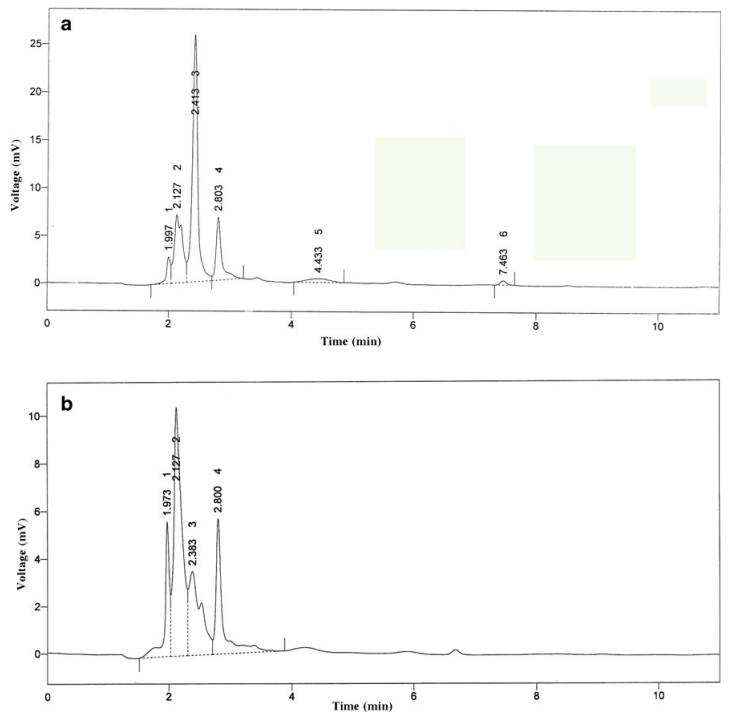 HPLC chromatogram of seaweed extracts a C. scalpelliformis, b G. corticate
HPLC chromatogram of seaweed extracts a C. scalpelliformis, b G. corticate
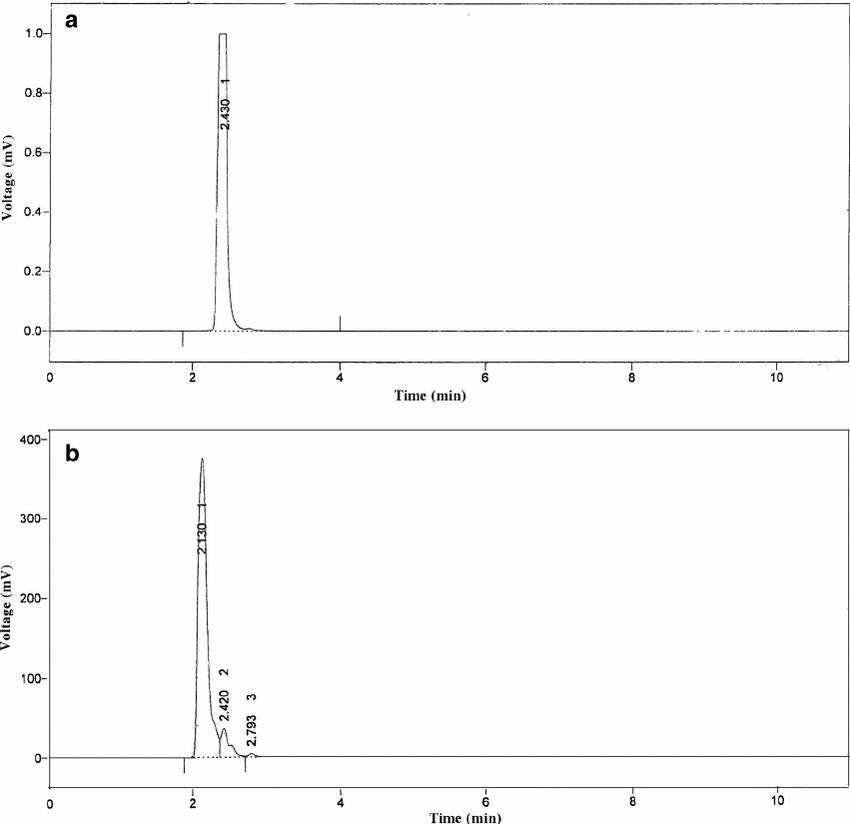 HPLC chromatogram of standard plant growth regulators a 6-benzylamino purine, b Indole-3-butyric acid
HPLC chromatogram of standard plant growth regulators a 6-benzylamino purine, b Indole-3-butyric acid
- Callus induction peaked at 97.8% with 0.6 mg/L picloram + 0.3 mg/L kinetin.
- 10% C. scalpelliformis extract significantly enhanced globular (63.2/mL), heart-shaped (36.9), torpedo (20.4), and cotyledonary (8.1) embryo stages, outperforming controls.
- Maturation was highest (7.2%) with 15% C. scalpelliformis extract; GA₃ (1.2 mg/L) yielded 5.2%.
- Germination favored 10% C. scalpelliformis extract, initiating shoots and roots; G. corticata induced root-first growth.
- Acclimatized plantlets showed 90% survival under greenhouse conditions.
- HPLC confirmed BAP and IBA presence in seaweed extracts, validating their role as natural plant growth regulators.
Reference
- Vinoth, S., P. Gurusaravanan, and N. Jayabalan. "Optimization of somatic embryogenesis protocol in Lycopersicon esculentum L. using plant growth regulators and seaweed extracts." Journal of Applied Phycology 26 (2014): 1527-1537. https://doi.org/10.1007/s10811-013-0151-z
FAQ of 6-Benzylaminopurine Analysis Service
What internal standards are used for quantification, and how do they improve accuracy?
We use stable isotope-labeled 6-BA analogs as internal standards, which co-elute with the target analyte and correct for matrix effects, extraction variability, and ion suppression in LC-MS/MS analysis.
How is matrix interference minimized during sample preparation?
Our protocol includes optimized solid-phase extraction (SPE) tailored to the sample matrix. SPE cartridges and elution conditions are selected to remove co-extracted phenolics, pigments, and other plant metabolites that may suppress ionization.
What is the method's reproducibility across biological replicates or batches?
Method precision is validated across multiple days and analysts. Inter- and intra-assay RSDs are typically<5%, with recovery stability confirmed over representative biological replicates.
Can you detect and resolve metabolic derivatives or conjugates of 6-BA?
While the standard assay targets free 6-BA, the method can be extended to detect 6-BA-glucosides or riboside derivatives upon request, subject to availability of reference standards and validation.
Is ion suppression evaluated for each matrix type?
Yes. We conduct post-extraction spike recovery and matrix-matched calibration, particularly for complex matrices such as leaf homogenates or formulated products, to quantify ion suppression or enhancement effects.
Can the method be scaled or adapted for multi-analyte cytokinin profiling?
Absolutely. The current platform supports multiplexed MRM panels, and can be extended to include zeatin, kinetin, thidiazuron (TDZ), and others, enabling integrated cytokinin profiling in a single run.
How are LOD and LOQ established for new sample types?
LOD/LOQ are empirically determined using signal-to-noise (S/N) criteria (typically S/N ≥3 for LOD, ≥10 for LOQ), and verified in representative matrix backgrounds through replicate spiking and dilution series.
What quality control measures are included per run?
Each batch includes matrix blanks, solvent blanks, spiked matrix controls, and calibration standards. Signal stability, retention time drift, and peak shape are monitored using system suitability checks and QC charts.
Are raw data files (e.g., .wiff, .raw) available for download or reprocessing?
Yes. Upon request, we provide native instrument files, processed integration tables, and peak review exports to support independent verification or re-analysis.
How is data normalized or adjusted for inter-sample comparison in biological studies?
We can apply dry weight normalization, total protein/DNA content adjustment, or exogenous reference spike correction, depending on your experimental design and data interpretation needs.
Learn about other Q&A about proteomics technology.
Publications
Here are some of the metabolomics-related papers published by our clients:

- Methyl donor supplementation reduces phospho‐Tau, Fyn and demethylated protein phosphatase 2A levels and mitigates learning and motor deficits in a mouse model of tauopathy. 2023. https://doi.org/10.1111/nan.12931
- A human iPSC-derived hepatocyte screen identifies compounds that inhibit production of Apolipoprotein B. 2023. https://doi.org/10.1038/s42003-023-04739-9
- The activity of the aryl hydrocarbon receptor in T cells tunes the gut microenvironment to sustain autoimmunity and neuroinflammation. 2023. https://doi.org/10.1371/journal.pbio.3002000
- Lipid droplet-associated lncRNA LIPTER preserves cardiac lipid metabolism. 2023. https://doi.org/10.1038/s41556-023-01162-4
- Inflammation primes the kidney for recovery by activating AZIN1 A-to-I editing. 2023. https://doi.org/10.1101/2023.11.09.566426
- Anti-inflammatory activity of black soldier fly oil associated with modulation of TLR signaling: A metabolomic approach. 2023. https://doi.org/10.3390/ijms241310634
- Plant Growth Promotion, Phytohormone Production and Genomics of the Rhizosphere-Associated Microalga, Micractinium rhizosphaerae sp. 2023. https://doi.org/10.3390/plants12030651

